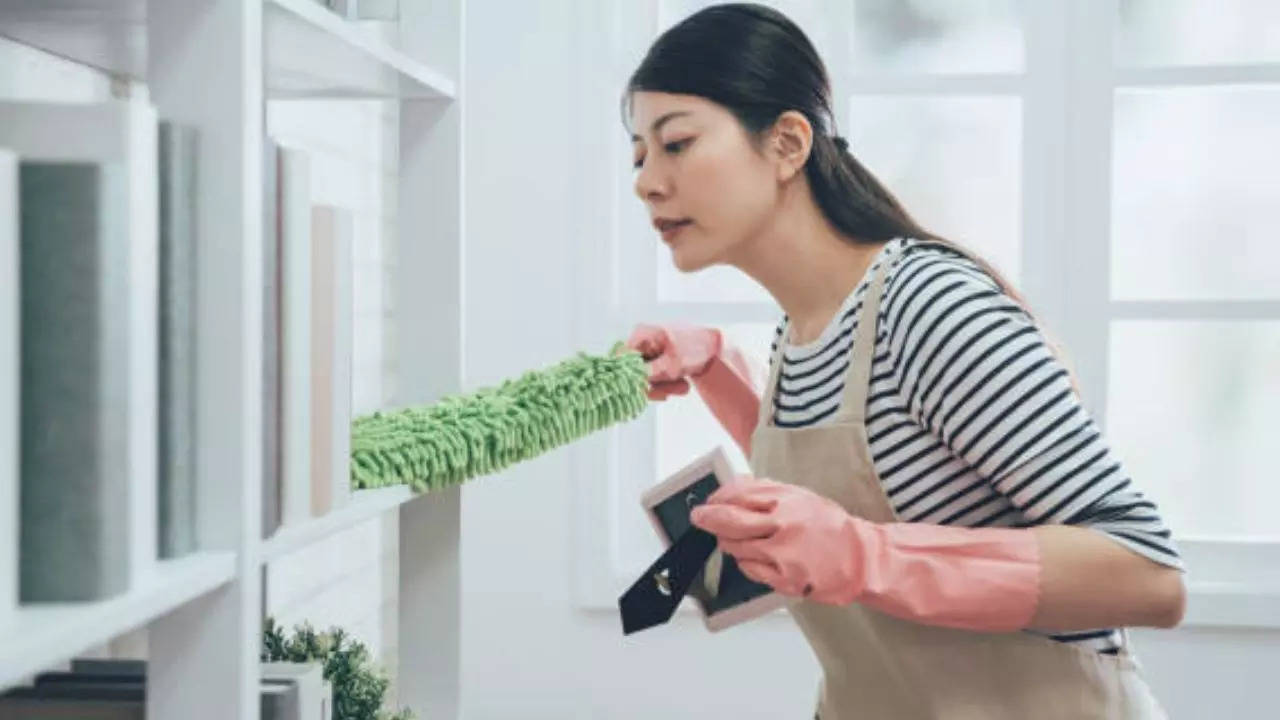Contents
-
news
-
Health
Cancer, allergies, and more: Here’s what happens when you skip dusting
Air pollution continues to be a challenge for residents of Delhi-NCR as AQI dropped from a dangerous 500 to a still troubling 160. While outdoor air has improved, indoor dust, laden with PM2.5 and allergens, remains a hidden threat to respiratory health. Learn effective cleaning and air quality tips to reduce risks and ensure a healthy home.

Cancer, allergies and more: What happens when you skip dusting (Image credit: iStock)
Air pollution has created an outcry in Delhi-NCR. With the air quality index (AQI) exceeding the ‘very poor’ category, residents are facing difficulty in breathing, leading to serious respiratory problems like asthma and bronchitis. Although the AQI has come down from 500 to 160, the dust particles present in your home can still cause a lot of problems for you. If you’ve put off dusting for a few days because the house looks ‘clean’ to you, you need to think again.
Our eyes cannot see beyond their limits, which often fools us. Dust particles, often referred to as particulate matter (PM), are a collection of microscopic particles of material. The dust inside your home can be made up of dirt, skin cells, mold spores, bacteria, dust mites, and mycotoxins. ranging from cough and bronchitis and even cancerThese small dust particles can cause a lot of trouble for you.
How can unhealthy levels of PM2.5 pose a health risk?
Unhealthy levels of PM2.5 (fine particulate matter) pose significant risks to human health. These particles, measuring 2.5 micrometers or smaller in diameter, are small enough to penetrate deep into the lungs and even enter the bloodstream. Their sources include vehicle emissions, industrial processes, and burning fossil fuels.
According to the World Health Organization (WHO), long-term exposure to PM2.5 can cause serious respiratory and cardiovascular diseases. It aggravates asthma, reduces lung function, and increases the risk of lung cancer, heart attack, and stroke. PM2.5 exposure is also linked to premature mortality, contributing to millions of deaths globally each year.
Research from the New York State Department of Health shows that PM2.5 can cause serious health effects such as inflammation of the airways, increased blood pressure and changes in heart rhythm. Long-term exposure increases the risk of chronic diseases and may reduce life expectancy. Studies show that for every 10 µg/m³ increase in PM2.5, average life expectancy is reduced by more than half a year.
Furthermore, urban air quality surveys show that local sources, such as traffic and industrial emissions, significantly influence PM2.5 levels in specific areas. Communities near these sources often experience higher health burdens, disproportionately affecting vulnerable populations, including low-income groups.
Reducing PM2.5 pollution requires concerted global and local efforts, such as transitioning to clean energy sources, improving public transportation, and enforcing strict emissions regulations. Public awareness and preventive measures, such as using air purifiers and avoiding outdoor activities during high pollution periods, are also important in reducing health risks.
How to get rid of dust completely from your home?
Getting rid of dust in your home is essential to maintain a clean and healthy environment. Here we have listed some effective ways to reduce dust accumulation:
1. Regular cleaning
– Vacuum with HEPA filter: Use a vacuum cleaner equipped with a high-efficiency particulate air (HEPA) filter to trap fine dust particles. Pay attention to carpets, rugs and upholstered furniture, which are major dust collectors.
– Mop hard floors: Wet-mop hardwood, tile or laminate floors to pick up dust without scattering it into the air.
– Dust with a microfiber cloth: Use a microfiber cloth or electrostatic duster, which traps dust instead of dispersing it.
2. Control air quality
– Air purifier: Install an air purifier with a HEPA filter to capture airborne particles.
– Humidifier: Maintain indoor humidity level between 30-50 percent. Too much moisture can promote dust mites, while too little moisture can make dust more airborne.
– Change HVAC filters: Regularly replace HVAC filters with high-quality options designed to reduce dust.
3. Clutter
– Reduce clutter that can collect dust, such as unused items, knick-knacks and piles of paper. Keep items in closed containers when possible.
4. Prevent dust entry
– Door Mats: Place mats at entryways to reduce mess inside the home.
– Seal Cracks: Seal gaps around doors and windows to prevent dust from entering.
5. Wash clothes
– Regularly wash bed linens and curtains and soak pillowcases in hot water to remove dust particles.
– Avoid laying carpet from wall to wall, which traps dust. Consider washable area rugs instead.
Get the latest news live on Times Now with breaking news and top headlines from around the world.
cancer


